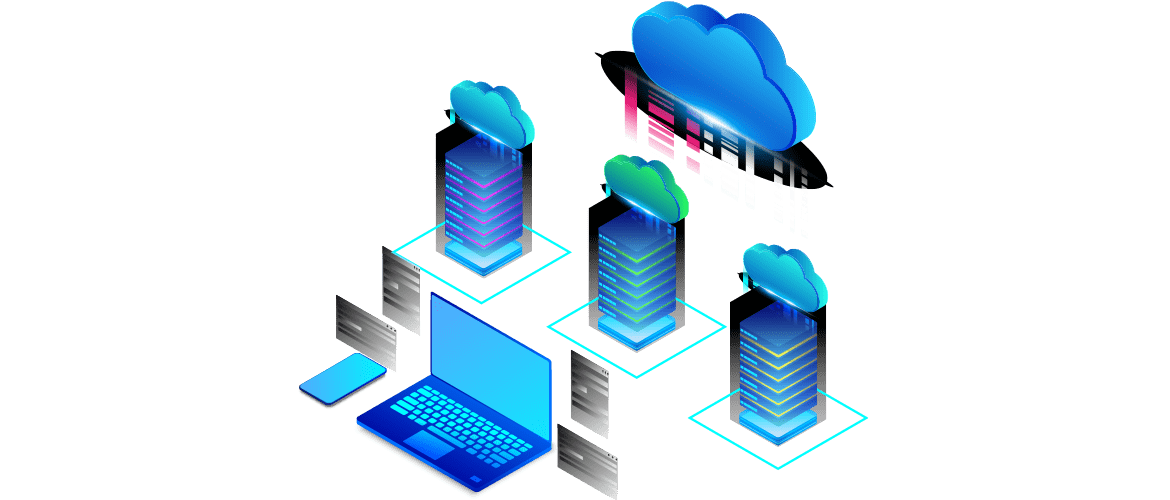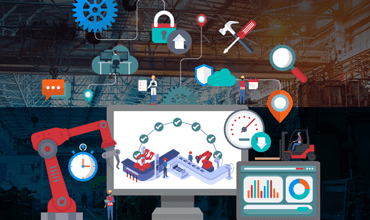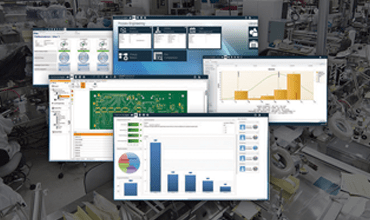Hybrid Cloud Value Summary
Using a hybrid cloud solution architecture brings the value of the “best of both worlds”. Data contextualized by the FactoryLogix IIoT-based platform is used for immediate live operational control and management, with fully contextualized data also being made available to cloud-based analytics systems through, a standards-based data warehouse, enabling enterprise-level business management. The Hybrid Cloud avoids inherent limitations that would otherwise be experienced using only site-based or cloud-based solutions in isolation.
What Is Hybrid Cloud?
In the context of assembly manufacturing, the term “Hybrid Cloud” refers to the way in which practical technologies are combined to deliver the highest performance, yet simplest, overall solution that satisfies the needs of the range of requirements across the whole business. The overall solution is built-up over a series of layers:
Layer #1 Shop-floor IIoT:
The use of the IIoT standards, alongside existing legacy interfaces, gather data in real-time directly from machines, without the need for middleware. This includes the ability to control machines and operations remotely.
Sending data to the cloud directly from this layer is meaningless for factory-orientated use, as data gathered from each source in isolation carries little meaning in their own right. Machines can only report what they sense internally, without any context to overall events. Simply moving this kind of data from the machine to the cloud directly, means that analytics will not be able to create value, as creating relationships between the many disparate points of data will be near impossible. It is estimated, based on actual cases where this has been done, that doing so renders 80% or more of the potential value of the data sent to the cloud as useless.
Layer #2 FactoryLogix Contextualization & MES:
Collecting data from all stations and operations around the shop-floor, FactoryLogix provides a unique singular platform in which to consolidate all of the data, with the ability to provide many different ways of contextualization of events as they happen, relating them to applicable production configurations, planning, material flow and other events. This process drives many of the added-value features of FactoryLogix, including the generation of material pull signals, the ability to accommodate new jobs into the production plan without risk of material shortage, failure to complete, schedule disruption, as well as production dashboards, automated alerts and alarms, and visual feedback of progress.
Layer 2 is fully focused on the optimization of the shop-floor, requiring near instant response and risk-free operation. Having this contextualization and MES layer in the cloud introduces risk, as there are inevitable dependency on the internet / intranet connection, which is shared with other business-critical applications. The size of raw data from the shop-floor, especially related to traceability, can be very large, and is always time-critical, which is likely to overload even the fastest connection from time to time. When using any digital solution to control and manage production, as well as for the collection of traceability data, the loss of system connection means the immediate stop of all production activities, otherwise data may be lost and mistakes made. There is also the security concern of having direct access to and from shop-floor equipment from outside influences.
Though FactoryLogix is fully deployable as a cloud-based MES solution, the implications of doing so, in terms of potentially delayed responses and increased risk due to the nature of cloud communication, must be fully understood and accepted. It is not the recommended approach in most cases.
Layer #3: Data Warehouse & Analytics
Data collected continuously from the shop-floor, once contextualized by FactoryLogix, has further potential value when used with analytic software, such as Business Intelligence (BI). There are many such systems available, and likely already in use within the financial side of the manufacturing business. Reports and analyses using these tools utilize data over weeks, months or even years, including potentially data from multiple manufacturing sites within an enterprise, and additional data taken from other enterprise tools, such as ERP. At this level of reporting, it is extremely important for the large amounts of data to be in a fully qualified contextualized form within a dedicated data warehouse. The structure of a data warehouse optimized for reporting is completely different to that used for live manufacturing management. FactoryLogix therefore creates a continuous output of data, feeding contextualized events into the data warehouse for reporting. Extremely long, detailed and complex reports, showing KPIs, values, trends and results of analysis, can then be performed without any impact on the performance of live manufacturing, and can be far more efficient due to the way in which the data is represented.
The data warehouse and associated analytics reporting using standard tools, can exist either on site, or in the cloud. The transfer of data between FactoryLogix and the data warehouse is resilient and robust, as well as secure, and therefore not affected by any internet or intranet connection speed, reliability or security issues. The data itself is also more compact in nature, putting less of a strain on network infrastructure.
FactoryLogix & The Hybrid Cloud Best Practice
Our recommendation for enterprise customers is to fully adopt the hybrid cloud approach. This consists briefly of the following:
Layer #1 Shop-floor:
Utilize natively supported, standards-based IIoT data connectivity where possible, with existing FactoryLogix x-Link adaptors used to connect to legacy equipment.
Layer #2 FactoryLogix Contextualization & MES:
Run FactoryLogix on a local site-based server, meeting mission-critical performance needs.
Layer #3: Data Warehouse & Analytics
Setup FactoryLogix to create and populate a cloud-based Data Warehouse, which combines data from all sites, utilizing existing or new off the shelf analytics tools that satisfy business needs.
As technology continues to progress, another use of information from the data warehouse and MES in the cloud is for more advanced analysis as compared to regular statistical analysis-based tools. It is essential to be prepared, to have 100% meaningful, actionable data in the cloud, rather than simply sending anything and everything, which ultimately will result in significant waste and lost opportunity.








